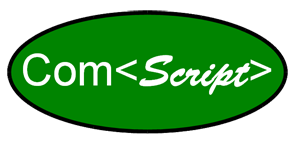Profiles
ComScript is a text based scripting language (simplified code that does not need to be compiled) where the settings and commands are written into a profile.xml file and sub-script files for larger projects. The profiles are written and edited with the Profile Editor which allows you to build your code with very little typing and syntax errors. As always, contact us if you have any trouble.
Each profile.xml file resides in a profile folder with a unique name inside the ComScript folder. The ComScript folder can be located in any read-writable drive on the PC (e.g. hard drive, external hard drive, dropbox folder, or USB thumb drive). It's useful to think of a ComScript profile as a specific programming project where the profile folder contains the pieces of your project such as the required profile.xml file and other optional files and folders relevant to your project. Additional items in the profile folder usually include a config.xml file where variables that appear in the Data Interface are defined (see Data Interface), a log.txt file that contains ComScript activities and results (created automatically on first profile execution and appended to thereafter), data files and folders and other helpful information such as device manuals.
Each ComScript command begins with the less than symbol, followed by the command name, followed by one or more attributes (specific controls on the command) and a forward slash and greater than symbol to indicate the conclusion of the command.
ComScript xml command format: <command attribute1="xx" attribute2="yy" attribute3="zz" />
The xml structure helps to keep the code organized and easy to understand unlike terse languages like C, C++ or Fortran, of which the code may appear as hieroglyphics to the inexperienced programmer. While the xml based profiles are easy to understand and write, ComScript still provides the power and flexibility for you to create the precise program you need.
